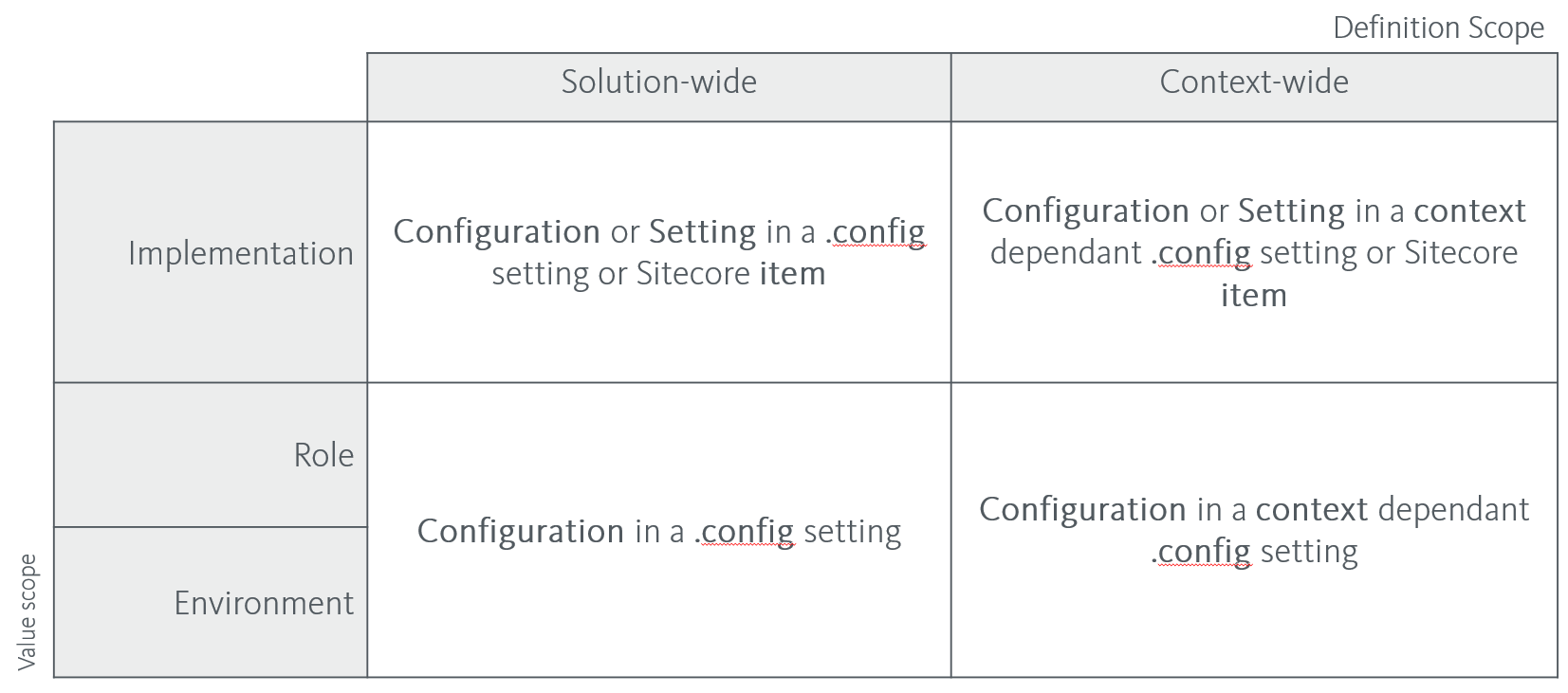2.7.1. Configuration strategy¶
It is very important to have a strategy for configuration and settings management, as wrong or missing configuration can not only have a negative impact on for example the performance and stability of the running solution, but poor configuration management can also slow down the productivity of the development team, as aspects such as deployment and upgrades can be unnecessarily complicated.
We differentiate Configuration from Settings in that Settings are aimed at the user roles (editor, administrator) and Configuration is aimed at the developer or IT system administrator roles.
This differentiation makes it significant where and how Settings and Configurations are managed in the Application Lifecycle. For example, you should be cautious of having Configurations defined as Sitecore content, as this can make it harder for developers and IT administrators to manage during deployment and upgrades, and can make it difficult to manage environment or server specific values such as connection strings. Take particular notice of the scopes of the configuration as defined in the following.
Each Configuration or Setting – whether predefined by for example Sitecore or defined by a module in your implementation - will have a Definition Scope and a Value Scope:
- Definition Scope
- describes on which level the configuration is defined, i.e. in what scope of effect a change of value will have.
- Value Scope
- defines in which circumstance values changes.
The following table describes the possible combinations of scope, and how configurations and settings map to those.

Figure: Scope of Configuration and Settings
Avoid having Settings defined in .config files as this counters the purpose of Sitecore users being able to change them. Please note that – although confusing – the <settings> section in the Sitecore .config files is considered Configuration.